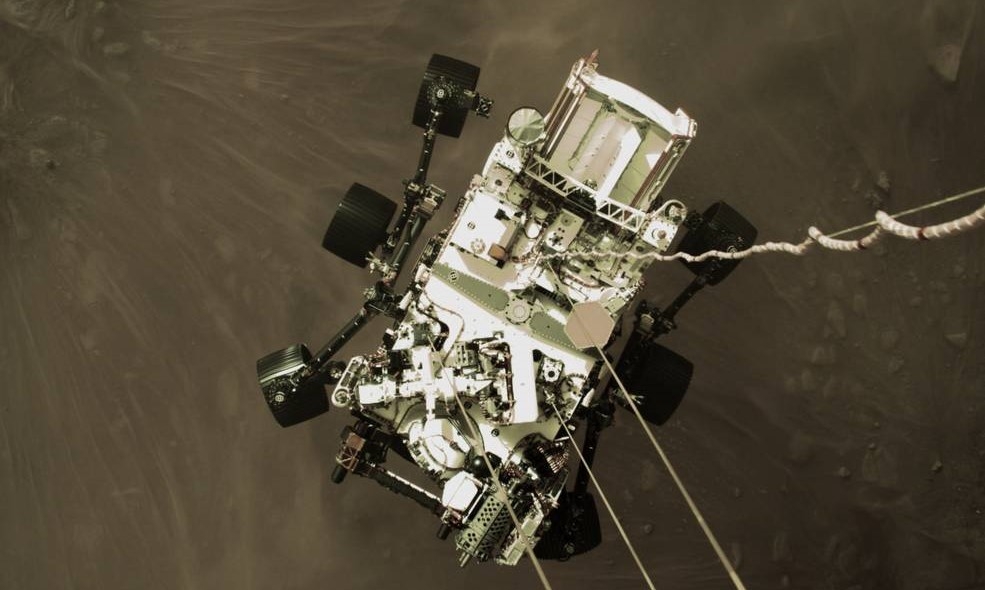
Putting the “Science” in “Science Fiction” – Lasers
From the Original Star Wars films to the latest releases in the Halo series, laser weapons are some of the most commonly used devices in science fiction.
Although they are very commonly used in both science fiction and the real world, the way in which lasers function is rarely addressed. Laser, much like Scuba, is a name that was originally an acronym. L.A.S.E.R. stands for Light Amplified by Stimulated Emission of Radiation.
Lasers produce light by working through several stages that exploit the principles of atoms. When an atom becomes excited, such as by an electric charge, the electrons in the atom move farther out from the atom’s nucleus. These electrons then relax to return to their former state, releasing the energy they gained as light particles called photons. Most lasers work by flash charging a large number of identical atoms, then trapping the resulting photons in between two mirrors. The photons continue to bounce back and forth, causing other atoms to excite and shed photons, thus continuing the cycle. One of the mirrors is designed to allow some light through, and this light becomes the laser beam. Lasers are widely used in the real world, and are grouped into different types based mainly on the material they use to produce the necessary photons, such as gas lasers, solid-state lasers, and chemical lasers, as well as others.

The laser beams generated by lasers are more difficult and expensive to produce than light beams from a flashlight or light bulb, but their many useful properties make the trouble worthwhile in many applications. Unlike the light produced in other ways, which is made up of many different wavelengths combined together, laser light is monochromatic and purely consists of one light wavelength. Laser beams are also much more coherent and directional than light from other sources, meaning that the laser beam is made up of more tightly packed photons that move in a single direction rather than spreading out. These unique properties make lasers very useful in many different applications, from household computer mice and DVD players to surgical lasers and heavy manufacturing lasers. Lasers are also being used by scientists attempting to create nuclear fusion reactions, as this will provide cheaper and safer energy than the nuclear fission reactions that are currently used. Lasers also have an enormous number of present and potential future military applications.
Handheld laser weapons like those shown in Star Wars or the Fallout series are still a thing of science fiction, but the modern military is already using lasers in many different roles. An example of this is how many firearms can be mounted with laser sights, which use the precision of a laser beam to show exactly where the weapon is pointing and aid its user in aiming accurately. Another common use of lasers in the modern military is to designate targets. When used in this manner a laser is shone at a distant target and a guided weapon like a missile or smart bomb detects the laser and aims towards it. This system vastly improves the accuracy of these munitions and enables them to more easily hit moving vehicles or small targets, such as in one case where a bomb was dropped down the chimney of a building. Precision strikes like this reduce collateral damage as well as ensuring the target is destroyed. Although these uses of military lasers have changed modern warfare research continues towards creating man-portable laser weapons.

The creation of lasers strong enough cause damage on the battlefield is not the greatest issue preventing the use of laser weapons. The U.S. military created lasers powerful enough for use as weapons several years ago, and successfully tested a Humvee mounted laser designed to destroy mines and IEDs almost a decade ago.
The United States also created an airborne laser system to shoot down ballistic missiles and successfully tested it before the program was cancelled due to its cost and feasibility concerns. The main issues being faced by scientists working on battlefield laser systems are cost, size, and power requirements. It is very expensive to build and test laser systems, especially experimental ones, and the costs for military laser programs can run into the millions or even billions, which can make finding funding difficult.
Another major problem with creating military lasers using modern technology is their size. Creating lasers powerful enough to destroy enemy targets is usually done by combining several smaller lasers into an array, which requires a lot of space. The size of individual lasers also increases with their power level, increasing the size again. The necessity of including cooling systems is also a factor, as lasers produce large amounts of heat, which must be dissipated in order to prevent damage to sensitive internal components. These cooling systems are generally bulky and heavy, meaning that laser systems must be made larger in order to accommodate them. Another large problem with creating lasers small enough that a soldier can carry them is the requirement for power. Lasers require an enormous amount of energy to deal physical damage, and there is not yet a way to generate this much power with something small enough to be carried. This is another reason why the military lasers that are being tested are mounted on vehicles like trucks, aircraft, or boats, as these platforms allow the power and size requirements to be met.

In order to get around some of these problems ideas for less powerful laser weapons are also being examined, such as dazzlers. These weapons use laser light to temporarily confuse and disable enemy combatants by disrupting their vision, while more powerful blinding lasers cause permanent blindness but have been outlawed by international law.
Research into creating laser weapons is ongoing, despite the difficulties. Lasers are attractive to military forces because handheld lasers provide numerous advantages over ballistic weapons.Lasers are usually silent or at least much quieter than conventional firearms, and the beam is invisible, unlike in most films and TV series. This means the firer’s position can be kept secret.
Lasers are also extremely accurate, as they use a tightly focused beam that travels at the speed of light, and so are less likely to miss their target than bullets. Modern ballistic armour is also fully designed to protect against bullet impacts and shrapnel, and so would offer little protection against the heat of a laser beam. Lasers appear to be a promising future weapon, and research into bringing them to the battlefield continues. In contrast, improvements are also being made to lasers used in peaceful applications as well.
Lasers offer many advantages over conventional projectile weapons besides their futuristic appeal, but numerous issues still need to be solved before they are feasible weapons. Like many science fiction technologies, such as exoskeletons, lasers are mostly held back by power and size requirements, but as breakthroughs in miniaturization and power generation are made, science fiction technologies like these will become science fact.












